"Kukuri Trap" is one of the methods of capturing wild animals such as wild boars and deer. When the beast steps on the trap, the wire tightens to capture the leg.
Among them, wild boars have high physical abilities, so there are some points that you should keep in mind when setting traps and dealing with wild boars after they are captured. Here are some tips to not only increase your catch rate, but also to kill wild boars more safely.
Install a boar trap
It can be said that setting up a tying trap is a test of wits with a wild boar.
Wild boars are sensitive to changes in the environment, and will avoid newly dug up soil or traces of human activity. It is important to set traps carefully and cunningly so as not to leave any traces.
First, decide where to place the trap. Carefully observe areas where wild boars are likely to be active, and look for boar droppings, footprints, and animal trails. Once you've found footprints and animal trails, narrow down the places to set traps more specifically.
Wild boars have a habit of avoiding branches and stones to avoid places where their feet are unstable. If there is a root of a tree in the middle of the animal trail, it is more likely that you will step over it and put your feet down.
Also, if there are steps, wild boars will try to put their feet on a stable part where they can easily step on. These locations are great spots to set traps. In this way, rather than just following traces, we will go a step further and predict the boar's behavior, which can be read from the traces, to increase the capture rate of traps.
Here's another article
[Thorough Explanation] What are the characteristics of Kukuri Trap and how to raise results?Careful measures against odors and camouflage
When setting up tying traps, pay attention to measures against odors. The soil dug up to set up the trap has a different smell than the dry soil on the surface. Boars have a keen sense of smell and can detect even the slightest change in smell. If you have excess soil from your excavation, place it a short distance away from the trap.
In addition to this, new traps have a man-made smell, so there is also a technique of exposing them to the rain to remove the smell. Similarly, some people avoid vinyl or rubber work gloves because they leave an odor. Because it leaves no trace of human odor, some trappers even use their work clothes for one season without washing them. Wild boars, which are not accustomed to humans, are particularly wary of smells, so it is a good idea to take measures as much as possible without impairing the performance of the trap.
In addition, after setting up a kukuri trap, camouflage is done using soil and dead leaves on the surface. It is important to devise ways to avoid being spotted by wild boars by doing the same thing as the surrounding environment. If you bring a brush with you, you can create a more natural and detailed camouflage.
It is also effective to place dead branches in front of and on both sides of the trap to limit the position of the boar's paws and increase the capture rate.
On the other hand, in the case of wild boars that are accustomed to humans, such as those that appear in human settlements during the daytime, there are cases where they do not avoid human traces. If you intentionally erase the footprints with your hand and then find the footprints in the same place, there is a very good chance that a boar will step on that spot.
If a wild boar was caught in a trap
During patrols, if a wild boar is caught in a tying trap, it will be necessary to deal with it afterwards. A wild boar caught in a trap is desperately trying to escape, and it is very dangerous because it is excited.
First, check the situation from a distance, and in the case of a slope, approach from a direction higher than the wild boar. When approaching, proceed slowly and stay vigilant. From outside the boar's range of motion, check to see if the tying trap is firmly attached to the boar's legs.
If the trap is loose, or if the wild boar rampages violently, the trap may come off. Be aware of the situation and ensure the safety of your work.
Here's another article
About stopping captured animals (wild boars, deer, etc.)If not caught alive, a boar caught in a tie trap will be stabbed on the spot. In that case, a blunt object such as a beating, an electric shock, or a knife is used. A gun may be used as a stabbing if necessary. If you decide that close combat is dangerous, make arrangements in advance so that you can call for help or use a gun to deal with it.
Here's another article
All-purpose machete, fukuronagasa charmWhen using a retainer (such as a nose tie)
If you want to enjoy the taste of wild boar meat that you have caught, and you want to process the meat from the stabbing to the processing in another place, you need to catch it alive. In that case, it is necessary to deprive the boar of freedom without hurting it as much as possible.
The boar's weapon is a rush. Furthermore, in the case of males, they will push up their fangs from there (Sakuriage). If you get close to nothing, you'll get kicked or stabbed. Even if the boar's movement is restricted by a tethered trap, approaching it casually is extremely dangerous.
In the case of large adults, it may be necessary to use restraints to restrict the boar's movements. One of the most popular retainers these days is the nose tie. The principle of the nose tie is almost the same as the tie trap. There is a device at the end of the extension rod, and when the boar's nose hits it, the boar's nose is tied up with a wire.
First, check the range of motion of the captured wild boar, guide the nose from outside the range of motion, and gradually approach the boar in a manner facing the boar (in the case of a slope, be careful not to approach from the low side). Just like the empty repellency of the tying trap, even if the nose hits it, it may fail to hold, so you need to be very careful.
Other types have a loop of wire at the tip that tightens the wire when the boar bites. Boar's Nose There is also a type in which the rope is tightened to bind the nose when the boar tries to bite.
Once the nostril is on, pull the rope and fix it to the surrounding trees. By pulling the leg trap and nose tie in opposite directions, the boar cannot move freely.
Put your weight on the rope so that it doesn't bend, and tighten it firmly to contain the boar's movements. Also, choose a tree that will not break easily when fixing the rope.
Produced by Inohoi! A product that can be used as both a foot tie and a nose tie
A thin stainless steel trap that can be used for both foot and nose ties. In the case of tying the legs, it is easy to install by simply sticking it into the ground, and no digging is required. In addition, you can also reply to snorting with one attachment. Click the banner below for details.

Lay the boar on its side and tie its legs
Approach from behind the boar that has been caught in the boar's snout, and scoop up the legs that are not tied to the snout to make the boar lie on its side.
In the case of an adult boar that is not that big, you can suppress the movement of the wild boar and tie the rope smoothly by pressing the base of the boar's leg with one knee and putting your weight on it. Use a rope to tie the four legs tightly.
If the size is large, first tie two legs and pull the remaining legs together.
When this state is reached, tie the boar with a rope or the like so as to block the boar's mouth. At this time, work while paying close attention to biting.
block one's vision with duct tape
Seal the wild boar's freedom, and when it is confirmed that it cannot move, blindfold it with packing tape. This is a technique used by Mr. Kunio Katagiri, who is famous for trapping, and the wild boars blindfolded with packing tape become more docile and less violent.
The wild boar, which was almost immobilized by the tying traps and restraints, was quickly wrapped in duct tape so as to hide its eyes. It will be easier to work if you climb over from the back side. Make sure there are no gaps so the light doesn't reach the boar's eyes.
Thorough safety measures without letting your guard down until the end
Don't let your guard down just because the boar is firmly fixed and you can't move. A wild boar that senses a life-threatening crisis may not go on a rampage.
In addition, there are cases where the wire that has been worn out by the boar's movement is cut, and there are cases where the boar cuts off its legs and starts moving. Be on the lookout for cases that require you to get close to a boar, such as beatings or electric shocks.

 箱罠
箱罠
 くくり罠
くくり罠
 パーツ類
パーツ類
 電気柵
電気柵
 自作キット
自作キット
 防獣グッズ
防獣グッズ
 監視カメラ
監視カメラ
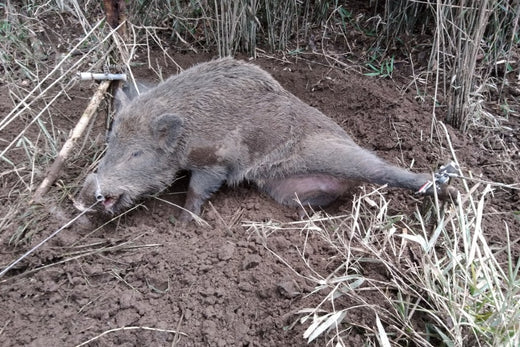
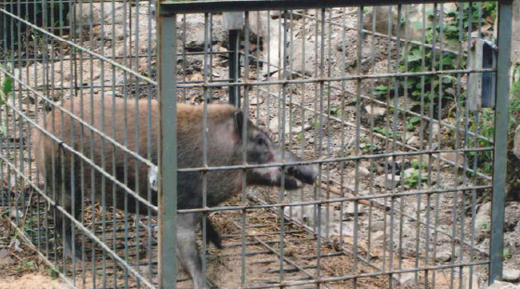
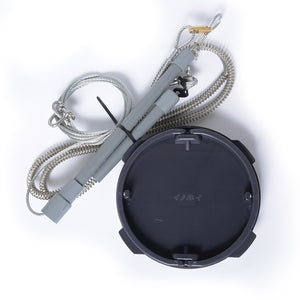
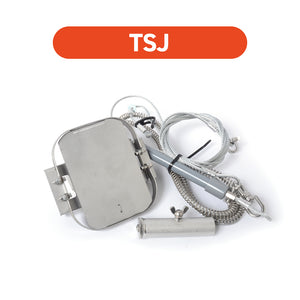
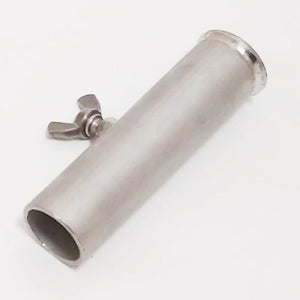



 box trap
box trap
 tying trap
tying trap
 enclosure trap
enclosure trap
 Prevention and avoidance goods
Prevention and avoidance goods
 electric fence
electric fence
 trap surveillance camera
trap surveillance camera
 transportation goods
transportation goods
 Trap detection sensor
Trap detection sensor
 hunting supplies
hunting supplies
 hunting books
hunting books
 Anti-bird goods
Anti-bird goods
 Agricultural materials/machinery
Agricultural materials/machinery
 boar
boar
 deer
deer
 Kyon
Kyon
 monkey
monkey
 raccoon
raccoon
 Badger
Badger
 palm civet
palm civet
 raccoon dog
raccoon dog
 nutria
nutria
 mouse or rat
mouse or rat
 Mole
Mole
 bear
bear
 pigeon
pigeon
 Crow
Crow







